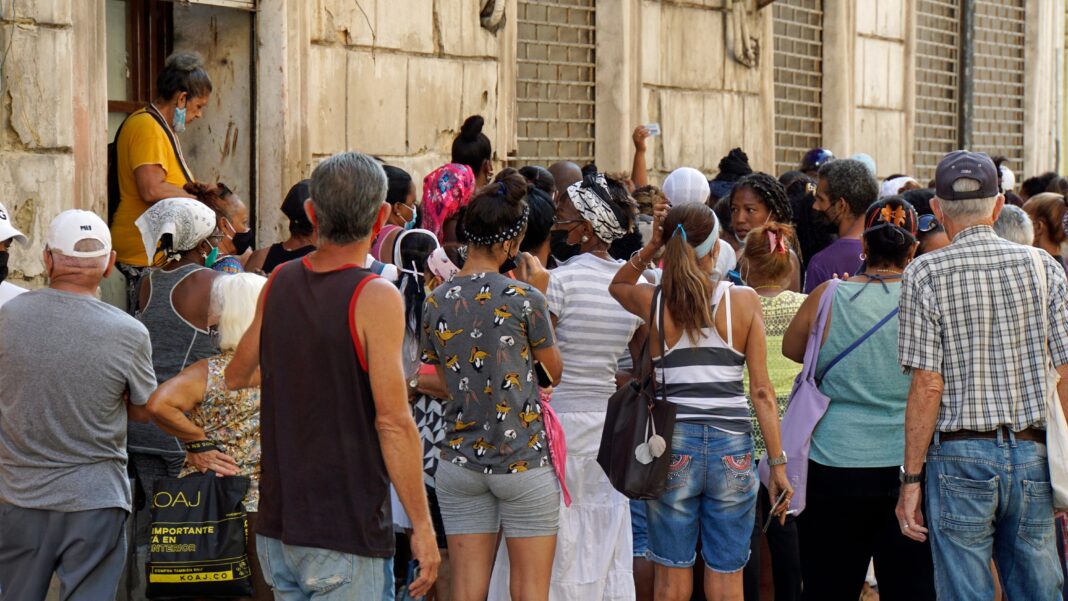By Ambra Visentin
For at least two years, Cuba has been suffering from severe shortages of food and other goods. It is the worst crisis since 1959, when Fidel Castro’s revolution established a communist regime in the country, and it is reflected in an unprecedented exodus of migrants abroad. The population is growing increasingly impatient. This month, protests broke out in the city of Santiago de Cuba, a rare occurrence given the government’s repression. In addition to the population’s difficulties in finding basic necessities, the huge inflation that makes even high salaries insufficient and the paralysis of productive activity, there is the instability of the energy network, which has brought the entire island to its knees in recent weeks. This was due in particular to maintenance work at the Antonio Guiteras power station, the island’s main energy producer, which did not return to service until 21 March.
The causes of the crisis
The pandemic crisis almost wiped out tourism, depriving the island of its main source of income. The government responded by investing heavily in the revitalisation and upgrading of tourist accommodation. However, these resources were diverted from other sectors, such as public infrastructure, which is now outdated and dysfunctional. Furthermore, tourism has not recovered from the US embargo imposed by former President Donald Trump. Financially, Cuba’s fragile economy relies on an inefficient payments system and chronic foreign exchange dependence. The local currency, the Cuban peso, remains weak. Finally, the growing public debt, which has now become unsustainable and which the Cuban government has partially defaulted on, has led many foreign countries, even those considered friends, to stop lending to Cuba.
Food shortages and inflation
The ‘libreta’, the ration book that the government uses to help Cuban families pay for food, was introduced in July 1963 and became one of the pillars of the island’s socialist system. It helped people through crises, including the Soviet aid cuts that led to the hardships of the 1990s, known as the ‘Special Period’. That system is in the midst of a deep economic crisis that has led to the exodus of nearly half a million Cubans to the United States in the last two years, with thousands more heading for Europe. The crisis has also drastically reduced the availability of rationed food.
There are many ways to buy food and toiletries such as toothpaste and toilet paper in Cuba. The cheapest are the bodegas, state-owned shops that operate on Soviet-inspired ration cards. Until a few decades ago, you could find all the food you needed there. These days, they are mostly reserved for the essentials, such as sugar, rice and powdered milk. Every month, the government publishes the distribution plan. But more and more often, the shelves are empty or the cards only allow for very small quantities. Products arrive randomly. People have to queue for long periods and make do with what is available, which is almost never enough.
From 2022, the distribution centres for the libreta de abastecimiento are entrusted to households under contract with the State. The libreta contains a list of free food items that are part of the individual “Canasta Básica” (consumer basket), worth 1,528 cups per month. This is a benefit in addition to the minimum wage, which has been increased to 2,100 cups. Everything above Canasta Básica is paid at capped prices: arroz (rice) at 10 cents per pound, a chicken ration at 35 cents, a pork ration at 230 cents. However, prices that are not capped can be up to ten times higher.
The opening of small private markets, with prices similar to international markets, aggravates the situation, where incomes remain between 16 and 23 dollars a month. The devaluation of the CUP (Cuban Peso), with an exchange rate of 1 dollar = 160 CUP and 1 euro = 180 on the street, is causing uncontrolled inflation, with food prices soaring. Official figures show an average annual inflation rate of almost 50% over the last three years and a 2% contraction in gross domestic product.
In search of help
With foreign loans cut off, the government in Havana is looking for new ways to revive the country. Cuba is hoping that closer ties with South Korea will boost its stagnating economy. After a 65-year ice age, Seoul and Havana have agreed to re-establish diplomatic relations at the ambassadorial level. The move was decided at a meeting at the United Nations in February. With the new ally, it is likely that there will now be one more country to lobby for an easing of the sanctions against Cuba. Seoul hopes that closer ties will lead to increased economic cooperation and greater access for Korean companies to the Cuban market.
Important signals are also coming from the ‘pan-Soviet’ world. At the beginning of March, Russian President Vladimir Putin approved an amendment to the loan agreements between Russia and Cuba. This will give the Caribbean island better conditions for the repayment and restructuring of debt contracted for the purchase of oil products between 2009 and 2019. The document in question was published on Monday on the Russian government’s official legal information portal. Cuba will have the option of paying this debt in roubles. The payment schedule will be postponed to 2028-2040, with appropriate interest on arrears. This would allow the island to cover part of its old debt with tourism revenues, without having to rely on revenues in dollars and euros.
Cover image by chriss73 on Shutterstock
























